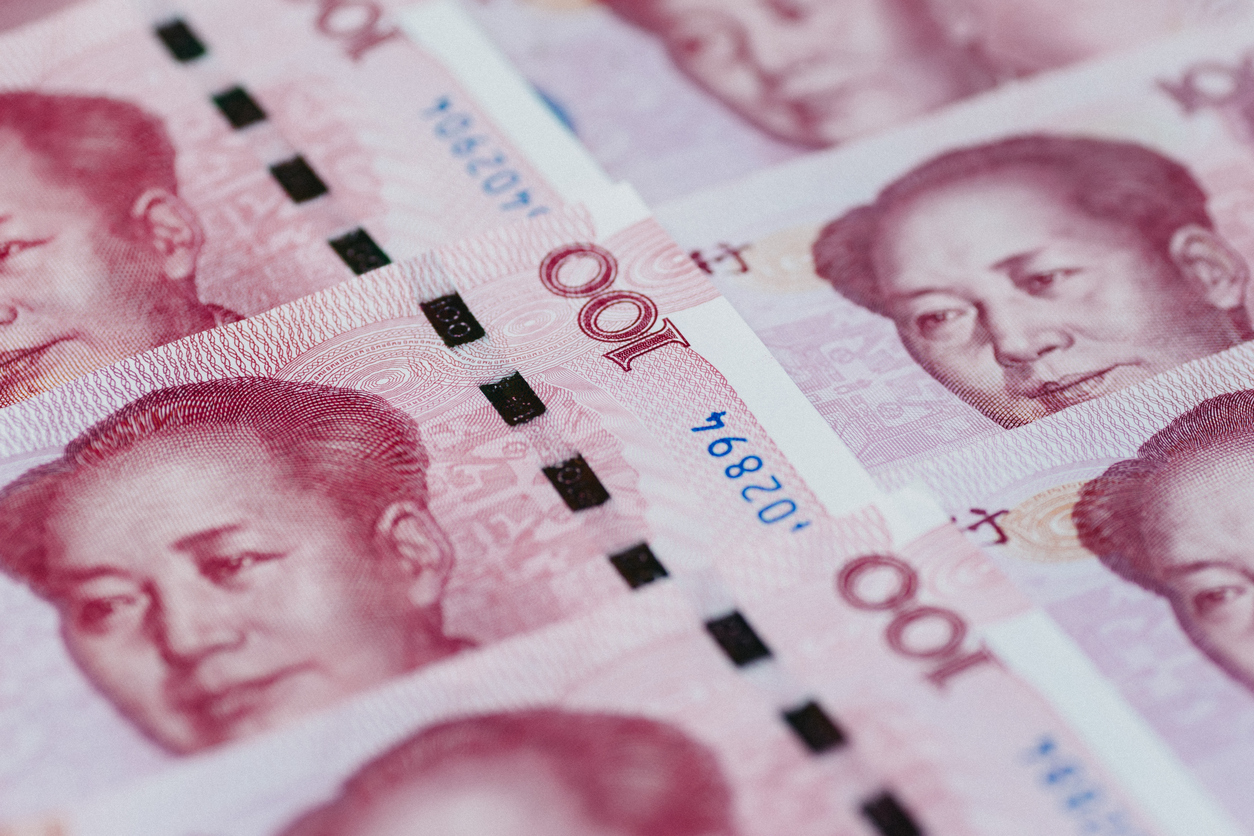(ATF) The scale of China’s fixed income market expanded rapidly in the first half of 2020. As of the end of June, the balance of bonds reached 105 trillion yuan (nearly $15 trillion), a year-on-year increase of 15.74%.
At the same time, foreign institutions’ holdings of RMB bonds in the first half of 2020 are 1.4 times that of the same period last year, and the allocation of yuan bonds by commercial banks is accelerating, while traditional brokerages are losing trade to banks.
As yuan bonds become more attractive, commercial banks are accelerating the allocation, due to the fact lending is risky in these harsh economic times. But competition is rising, as it’s predicted there will be fewer bonds allocated in the second half of this year. China’s Ministry of Finance this week announced it will distribute 2 trillion yuan directly to grassroots level cadre rather than issuing special bonds, or other financial instruments.
In the first half of 2020, the total issuance of fixed income products in the market reached 25.9 trillion yuan, a year-on-year increase of 19%. Net issuance in the first half of the year was 8.29 trillion yuan, a year-on-year increase of 55%. Some 36.6% of this was corporate credit, while about 46% was government bonds (local government bonds and national bonds accounted for 34% and 12.7% respectively), while 13% was policy bank bonds.
As of the end of June, foreign institutions had held a total of 2.51 trillion Chinese bonds, an increase of 81.4 billion yuan from the end of May. The net increase in holdings in the first half of 2020 is about 322.4 billion yuan, 1.4 times that of the same period last year.
In January, foreign media quoted by China’s Interface News reported that China’s bonds were going well, and said that now is the best time to buy Chinese treasury bonds. Yuan bonds may be more attractive than US bonds and German bonds. At the same time, according to statistics monitored by Refinitiv, the volatility of Chinese government bonds has performed better than US bonds and German bonds this year.
Three reasons
Regarding the strong performance of yuan bonds, Liu Linan, head of macro strategy for Greater China at Deutsche Bank, believed there were three main reasons for this. One was the large-scale fiscal expansion and loose monetary policy adopted to cope with the epidemic and stabilise growth, supporting enterprises and the public sector to be prudent and reasonable, with increased leverage.
Secondly, with low-risk asset yields hitting new lows, credit spreads narrowing, and corporate credit growth supported by special purpose tools, financing costs were further reduced.
Thirdly, in the first half of the year, relief financing for local governments and enterprises had become a main focus, and administrative procedures related to the ‘green channel’ fast-track process had been simplified, so the approval of bond financing for enterprises affected by the epidemic had been accelerated.
In the second quarter of this year, as the supply of bonds accelerated, commercial banks also accelerated the pace of allocation, and their market share rose from 58% in the first quarter to 61%. The pace of asset management funds’ allocation of newly issued bonds has slowed, with its incremental share dropping from 38.6% in the first quarter to 22%. Overseas investors bought 260 billion worth of yuan bonds in the second quarter, and their market share increased from 2.1% in the first quarter to 7%.
Yuan assets more popular
In the second half of the year, the overall supply risk is moderate, as yuan assets are becoming more and more popular
Bond Connect transaction volume rose steadily to 1.21 trillion yuan in the second quarter, and the average daily transaction volume rose 6.7% to 20.5 billion yuan from the previous quarter. The average daily transaction volume in the first half of the year rose to 19.9 billion yuan, a year-on-year increase of 195% and an increase of 86% from the end of 2019.
Supply pressure
In the second half of 2020, pressure on the supply of government bonds will remain. Liu Linan predicts that the net issuance of national debt will increase by 66% in the second half of the year, and the average monthly net issuance is expected to reach 400 billion yuan. Compared with the first half of the year, the net issuance of local government and policy bank bonds is expected to decline by 30% and 15%, respectively. In the second half of the year, the scale of corporate credit supply may reach 1 trillion yuan.
Bank of China Securities also believes that supply pressure in the bond market continues to be high. Since the beginning of 2020, affected by the loosening of monetary policy, interest rates in the domestic bond market have continued to fall.
But on the other hand, affected by the continued low level of interest rates, the bond market supply has increased significantly since the beginning of this year. The scale of new corporate bond financing in social financing from January to May reached 2.99 trillion yuan, an increase of 1.56 trillion compared to the same period in 2019. The government bond financing scale reached 3.05 trillion yuan, an increase of 1.28 trillion yuan over the same period in 2019, and affected by the proactive fiscal policy, the total supply of government bonds will remain at a relatively high level in the second half of 2020.
Short and medium-term bonds favoured?
In regard to the preference for bond allocation, Liu Linan predicts that bond demand in the third quarter will mainly come from commercial banks, asset management companies and foreign investors. Considering supply risks, currency market interest rates and the volatility risks of yuan risky assets, the market may continue to favour short- and medium-duration bonds.
Bank of China Securities said that the current loose monetary environment is difficult to manage, and the pressure on financial institutions to allocate increases is hard. Under the influence of a loose monetary environment, financial institutions, as the transmission channel of monetary policy, have significantly expanded their balance sheets. As of the end of May, funds flowed mainly to government agencies, enterprises and residential sectors, and less funds flowed to financial inter-industry sectors. The pressure on asset allocation of financial institutions has increased.
In addition to yuan bonds, yuan assets are also an increasingly popular choice for international investors. Wen Bin, chief researcher of China Minsheng Bank, once said that in terms of cross-border capital flows, the domestic economic situation has gradually improved recently, driving the recovery of the capital market, favoured by international investors.
























